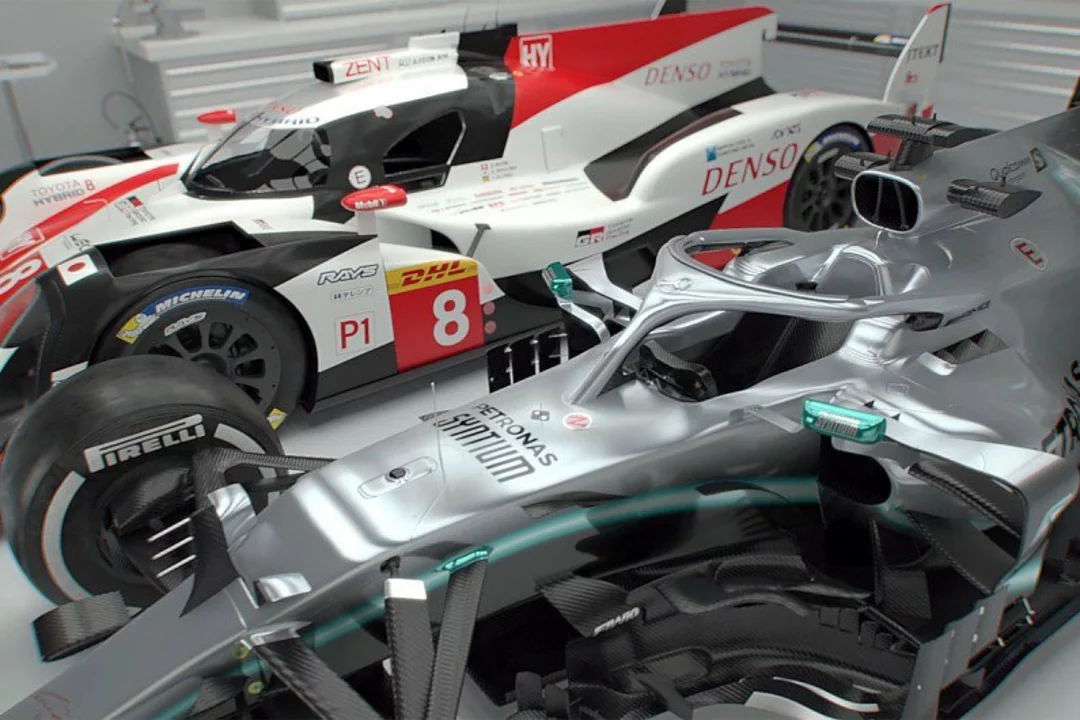Introduction: LMP1 vs. IndyCar
As a motorsport enthusiast and blogger, I've always been fascinated by the different types of racing cars and their specific characteristics. One question that often comes up is whether an LMP1 car is faster than an IndyCar. In this article, we'll dive deep into the world of these two racing categories and compare their performance, design, and technology. So, buckle up and let's embark on this thrilling journey!
Understanding LMP1 Cars
Le Mans Prototype 1 (LMP1) cars are the fastest closed-wheel racing cars used in endurance racing series such as the FIA World Endurance Championship (WEC) and the iconic 24 Hours of Le Mans. LMP1 cars are known for their cutting-edge technology, featuring hybrid systems, advanced aerodynamics, and lightweight materials. The main goal of these cars is to achieve the highest possible performance while ensuring fuel efficiency and durability for long-distance races.
IndyCar Overview
IndyCar, on the other hand, is an open-wheel racing series primarily held in the United States. The IndyCar Series, which includes the famous Indianapolis 500, is known for its high-speed oval racing and tight street circuits. The cars used in this series are designed to be fast, agile, and highly responsive, making them perfect for the intense wheel-to-wheel racing that characterizes IndyCar events.
Comparing Top Speeds
When it comes to top speed, IndyCar seems to have the upper hand. On oval tracks, IndyCars can reach speeds of over 230 mph (370 km/h), while LMP1 cars usually have a top speed of around 205 mph (330 km/h). However, it's essential to note that LMP1 cars are designed for endurance races, where fuel efficiency and reliability are more critical than outright speed. In contrast, IndyCars are built for high-speed, short-duration races where top speed is a key factor.
Acceleration and Braking Performance
Acceleration and braking are two critical aspects of a race car's performance. LMP1 cars, with their hybrid powertrains, can produce a massive amount of torque, which allows them to accelerate from 0 to 60 mph in just over 2 seconds. IndyCars, while not as torquey, can still reach the same speed in about 2.5 seconds. When it comes to braking, both cars have highly advanced systems, but the lighter weight and more extensive aerodynamic devices of LMP1 cars give them an advantage in braking performance.
Aerodynamics and Handling
Aerodynamics play a crucial role in a race car's ability to corner at high speeds. LMP1 cars feature highly sophisticated aerodynamic designs, with numerous wings, vents, and other devices to create downforce and minimize drag. IndyCars, while also featuring advanced aerodynamics, have a simpler design due to the series' regulations. As a result, LMP1 cars generally have more grip and better handling in high-speed corners, while IndyCars excel in low-speed turns and quick direction changes.
Fuel Efficiency and Endurance
As mentioned earlier, LMP1 cars are designed for endurance racing, where fuel efficiency is crucial. These cars use hybrid systems that combine internal combustion engines with electric motors to maximize performance while reducing fuel consumption. IndyCars, meanwhile, rely solely on internal combustion engines and prioritize speed over fuel efficiency. This means that LMP1 cars can cover longer distances on a single tank of fuel, which is essential in endurance races such as the 24 Hours of Le Mans.
Driver Safety and Comfort
Both LMP1 and IndyCar series prioritize driver safety, with stringent regulations and advanced safety technologies in place. LMP1 cars, being closed cockpit, offer better protection from debris and impacts, while IndyCars have recently introduced the Aeroscreen, a protective device that covers the open cockpit. As for driver comfort, LMP1 cars are designed for long stints, with features such as air conditioning and adjustable seats to ensure the driver's well-being during endurance races.
Technological Innovations
LMP1 cars are often seen as technological showcases, with manufacturers using them as platforms to develop and test new technologies that may eventually find their way into road cars. Hybrid systems, advanced materials, and cutting-edge aerodynamics are just a few examples of the innovations found in LMP1 cars. IndyCars, while also featuring advanced technology, have a more standardized design due to the series' regulations, which aim to maintain a level playing field among teams.
Conclusion: Which One is Faster?
Ultimately, the answer to whether an LMP1 car is faster than an IndyCar depends on the context. In terms of top speed, IndyCars are faster, while LMP1 cars have the edge in acceleration, braking, and high-speed cornering. However, it's essential to remember that these cars are designed for different types of racing, with LMP1 cars built for endurance and fuel efficiency, and IndyCars focused on high-speed, short-duration races. Both categories offer thrilling racing action and showcase the pinnacle of motorsport engineering, making them both fascinating subjects for motorsport enthusiasts like myself.

Author
Maverick Leclair
Hi, I'm Maverick Leclair, a sports enthusiast with a passion for motorsports. I've spent years honing my expertise in various sporting disciplines, but my true love lies in the adrenaline-pumping world of racing. As a writer, I enjoy sharing my insights and experiences with fellow fans of high-speed pursuits. From Formula 1 to MotoGP, I've got you covered with the latest news, analysis, and in-depth features. Join me as we explore the fascinating world of motorsports together.